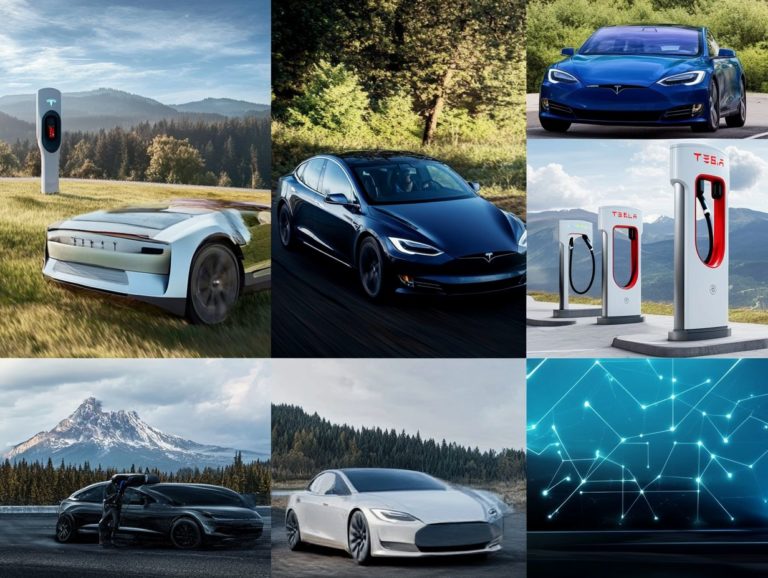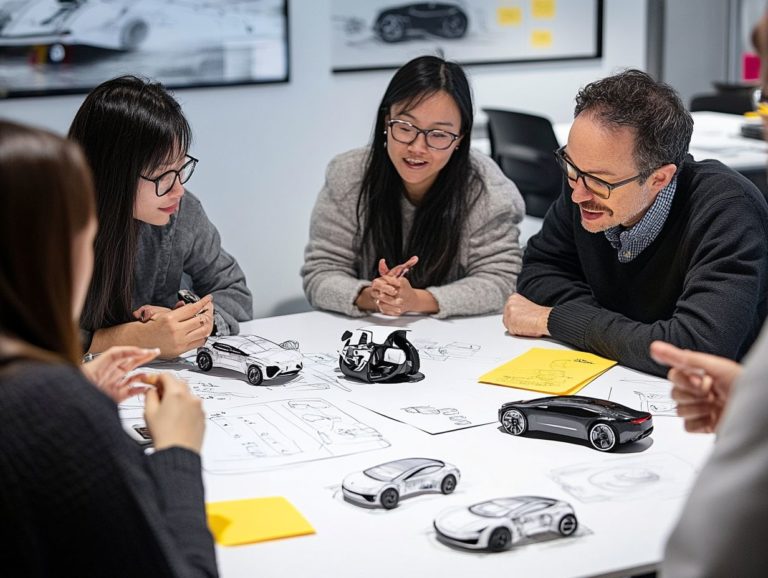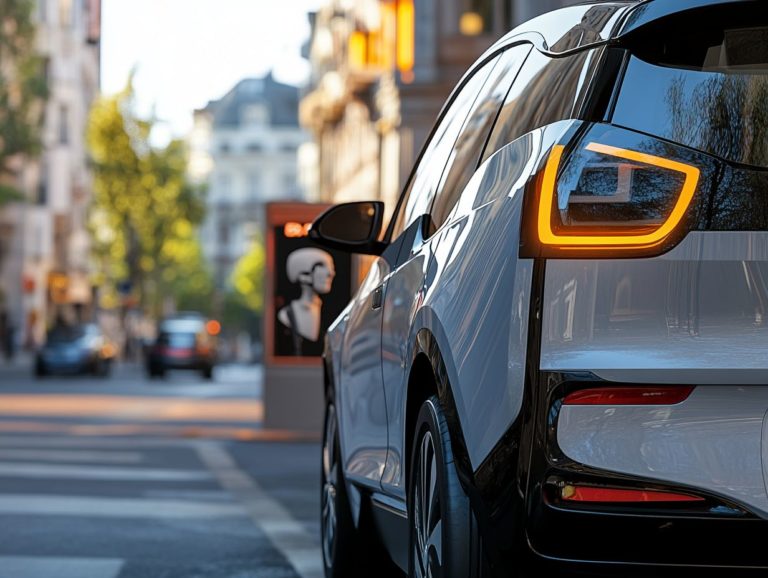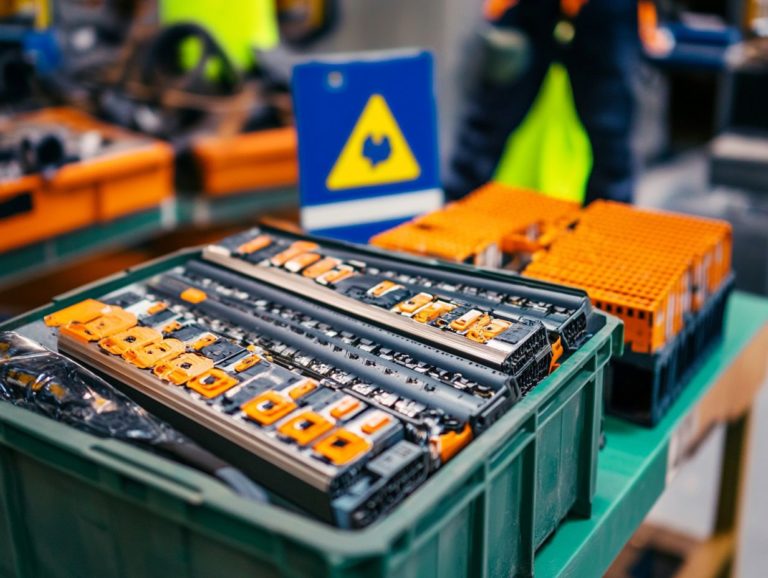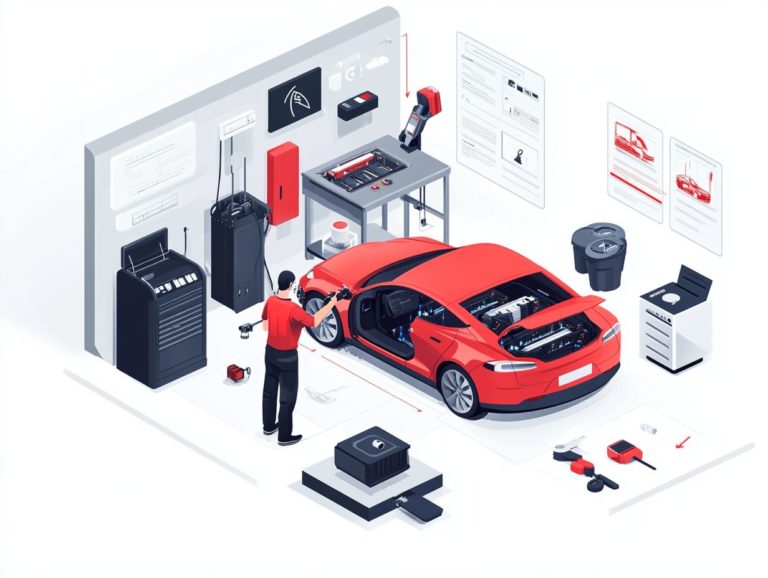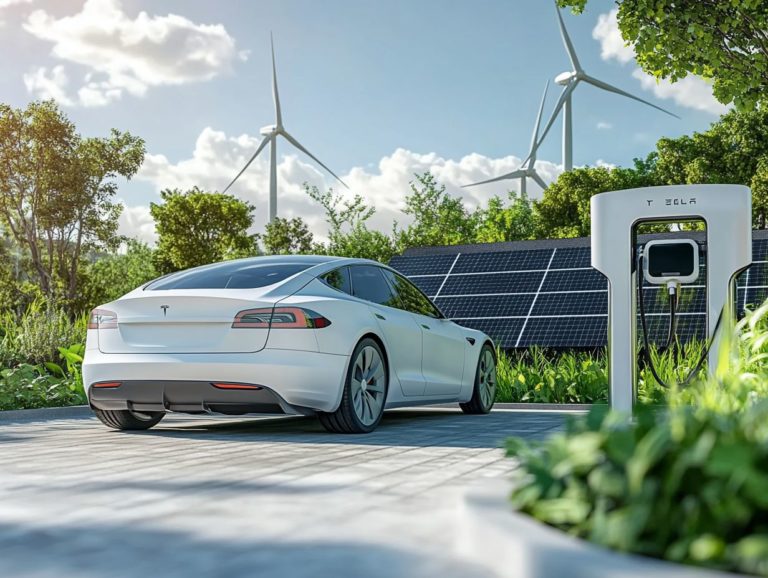How to Prepare for the EV Boom in Your City
The rise of electric vehicles (EVs) is fundamentally transforming the landscape of transportation and urban life.
As cities adapt to this significant shift, understanding the current and projected growth of EVs is essential. Beyond individual benefits, EVs offer cities environmental advantages and economic opportunities. However, challenges persist, particularly with infrastructure and policy frameworks.
This article explores how you can prepare your city for the impending EV boom. It showcases opportunities for local businesses and communities to thrive in this new era. Discover the transformative potential of EVs and learn how to effectively harness it for your city’s future.
Contents
- Key Takeaways:
- The Rise of Electric Vehicles (EVs)
- Benefits of EVs for Cities
- Challenges and Solutions for EV Implementation
- Preparing Your City for the EV Boom
- Impact on Local Businesses and Communities
- Frequently Asked Questions
- What is an EV boom and why should I prepare for it in my city?
- What infrastructure changes should my city make to prepare for the EV boom?
- What steps can I take as an individual to contribute to preparing for the EV boom in my city?
- How can my city encourage more residents to switch to EVs?
- What other benefits can my city expect from preparing for the EV boom?
- How can my city ensure equity in the EV boom preparations?
Key Takeaways:
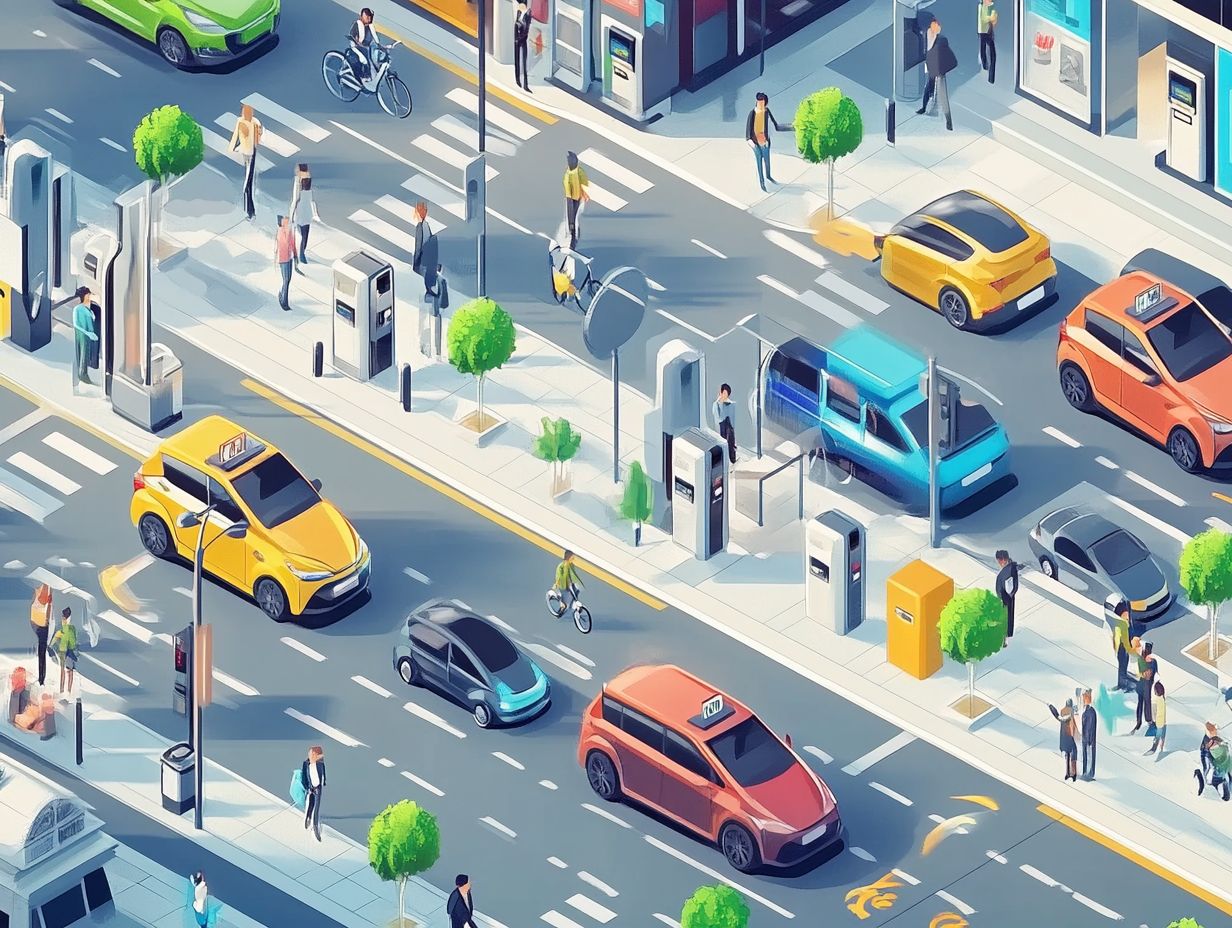
- Embrace the EV boom in your city by understanding its benefits, including positive impacts on the environment and local economy.
- Take proactive steps to prepare your city for the rise in EVs, such as investing in infrastructure and implementing supportive policies.
- Recognize the potential for growth in local businesses and communities as EVs become more prevalent.
The Rise of Electric Vehicles (EVs)
Electric vehicles (EVs) are changing transportation. Policy shifts under the Biden administration aim to reduce carbon emissions. Local leaders are excited about this change and actively encourage EV adoption across the United States.
As communities move toward a greener future, the push for electric vehicles is not just about reducing carbon footprints. It s about creating a sustainable and efficient public transit system, aligning with federal initiatives for switching to electric vehicles for public and company cars.
Current and Projected Growth of EVs
The current and projected growth of electric vehicles presents a compelling picture of upward momentum, fueled by advancements in EV infrastructure and federal grants designed to enhance charging stations nationwide.
Recent statistics reveal that EVs currently hold about 5.6% of the total automotive market share in the United States. This figure is projected to soar to nearly 30% by 2030, according to industry analysts. Initiatives like the Volkswagen plant in Chattanooga, Tennessee, exemplify critical steps being taken to support this growth, as the facility aims to produce electric SUVs while creating thousands of jobs.
Government support measures, such as the $7,500 federal tax credit for EV buyers, are powerful incentives for consumers ready to make the leap. Collectively, these elements signify a rapidly evolving landscape for electric vehicles, heralding considerable changes in production and consumer adoption.
Benefits of EVs for Cities
Electric vehicles (EVs) offer numerous advantages for cities, particularly in their ability to significantly lower carbon footprints. They align seamlessly with economic strategies championed by the Biden administration while fostering strong community support for sustainable transportation initiatives.
Environmental and Economic Advantages
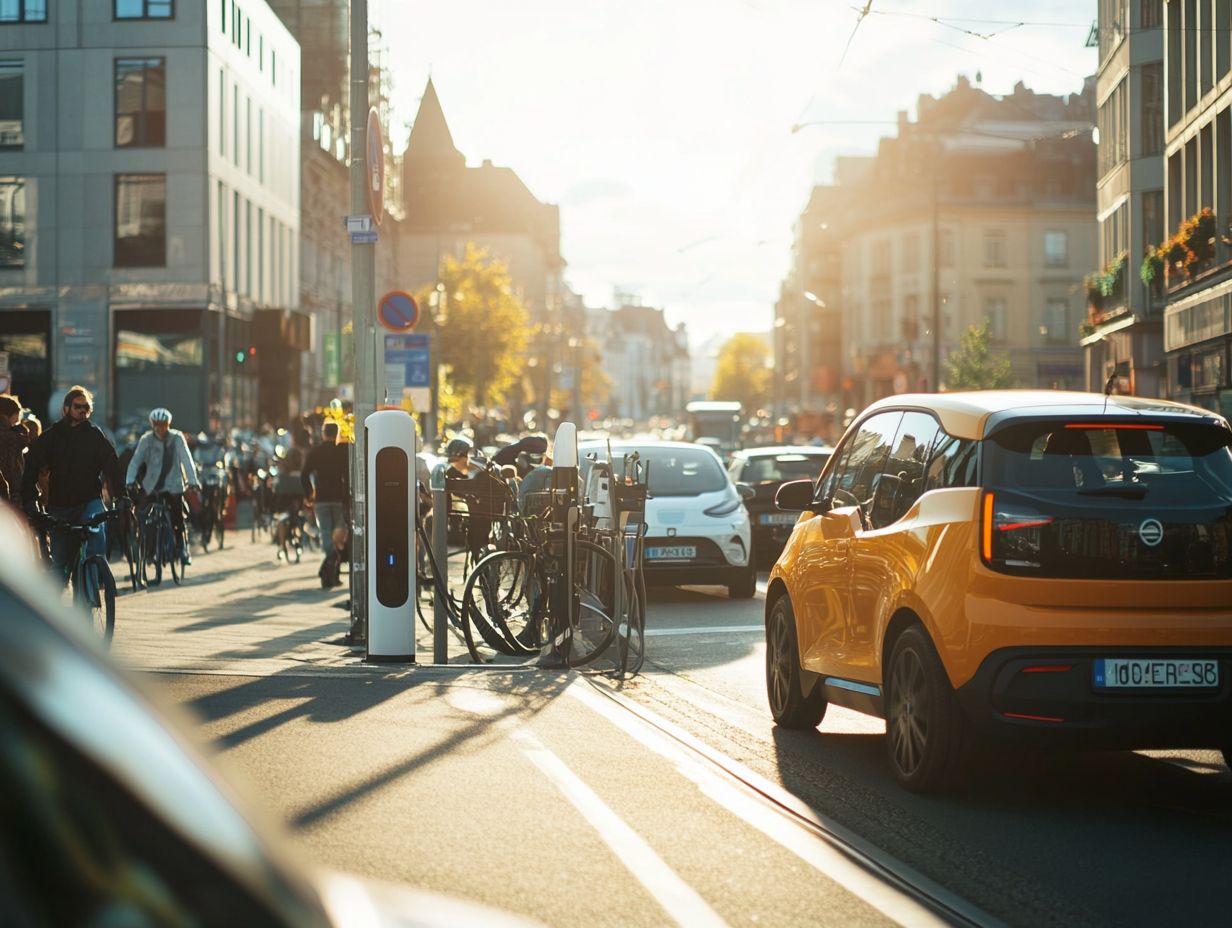
The environmental and economic benefits of electric vehicles are profound. By enhancing EV infrastructure, such as charging stations, you can invigorate your local economy.
Embracing electric mobility can significantly improve air quality, fostering healthier communities. This shift plays a vital role in lowering greenhouse gas emissions, a crucial step in combating climate change. Local initiatives can spur job creation in the installation and maintenance of charging stations and other EV-related services.
As a local leader, your influence is invaluable in developing supportive policies that encourage businesses to invest in EV technology. This commitment not only enriches the environment but also bolsters the economy, paving the way for a sustainable future.
Challenges and Solutions for EV Implementation
While the future of electric vehicles (EVs) looks bright, significant challenges still lie ahead for their widespread adoption. Key issues include the pressing need for enhanced infrastructure, necessary upgrades to the power grid, and an expansion of public charging stations.
Addressing these challenges demands proactive engagement and decisive action from local leaders.
Infrastructure and Policy Considerations
Infrastructure and policy are important for the successful rollout of electric vehicles. A comprehensive network of public chargers and substantial federal funding can bolster community initiatives.
These components are essential because they create a necessary framework for electric mobility and build public trust. When communities work to expand charging networks, they often see a boost in local economies as greater access encourages residents to adopt electric vehicles.
Take cities like San Diego as an example. They illustrate how collaborative efforts between local governments and private enterprises can effectively use federal funding. This partnership has led to charging stations being installed in underserved areas.
Aligning community support initiatives with federal funding and strong economic strategies can ignite a powerful push for integrated EV infrastructure that benefits everyone involved.
Preparing Your City for the EV Boom
Prepare your city for the impending electric vehicle (EV) boom by using various strategies that align with the Biden administration’s vision. Cultivate community support, tackle infrastructure challenges head-on, and engage local leaders to champion the adoption of EVs and smart cities.
Implementing these strategies can position your city at the forefront of this transformative shift in transportation.
Steps to Take and Resources to Utilize
Get ready for EV adoption by focusing on key steps and resources. Start by securing federal grants for charging stations and fostering community support through engagement with local leaders.
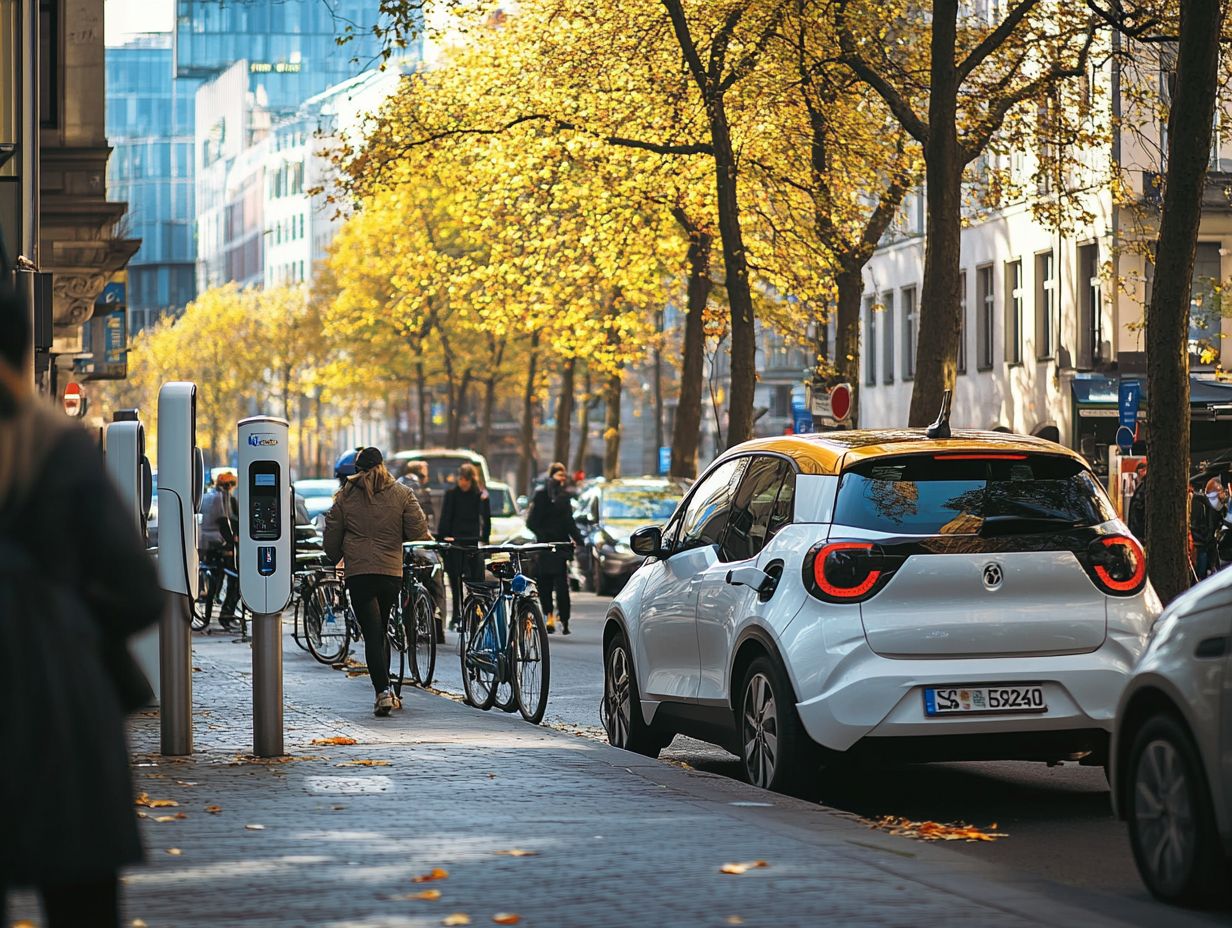
Conduct assessments to identify the best locations for charging infrastructure, ensuring accessibility for all residents. Allocating specific budgetary funds for electric vehicle initiatives is crucial for guaranteeing sustained progress.
Public awareness campaigns can educate citizens on the benefits of EVs, highlighting both environmental and economic advantages. Partnering with local businesses, educational institutions, and non-profit organizations will further enhance your outreach efforts.
By continuously evaluating your strategies, you ll be well-equipped to adapt to emerging technologies and user needs, ultimately fostering a more sustainable urban environment.
Impact on Local Businesses and Communities
The impact of electric vehicles on local businesses and communities is significant. They not only enable fleet electrification but also transform public transit systems, fostering community support and invigorating local economies.
By embracing this shift, you can witness firsthand how electric vehicles contribute to a more sustainable and prosperous environment for everyone involved.
Opportunities for Growth and Adaptation
Electric vehicles present exciting opportunities for local businesses. By adopting EVs and setting up charging stations, you can align with broader economic strategies.
Embrace this shift to tap into new market segments seeking sustainable options. This transition attracts environmentally conscious consumers and creates jobs in installation, maintenance, and customer service for EV infrastructure.
Community support is essential for driving initiatives and awareness campaigns. Working together, businesses, governments, and citizens can create innovative solutions that enhance economic resilience and lead to a cleaner, greener future.
Frequently Asked Questions
What is an EV boom and why should I prepare for it in my city?
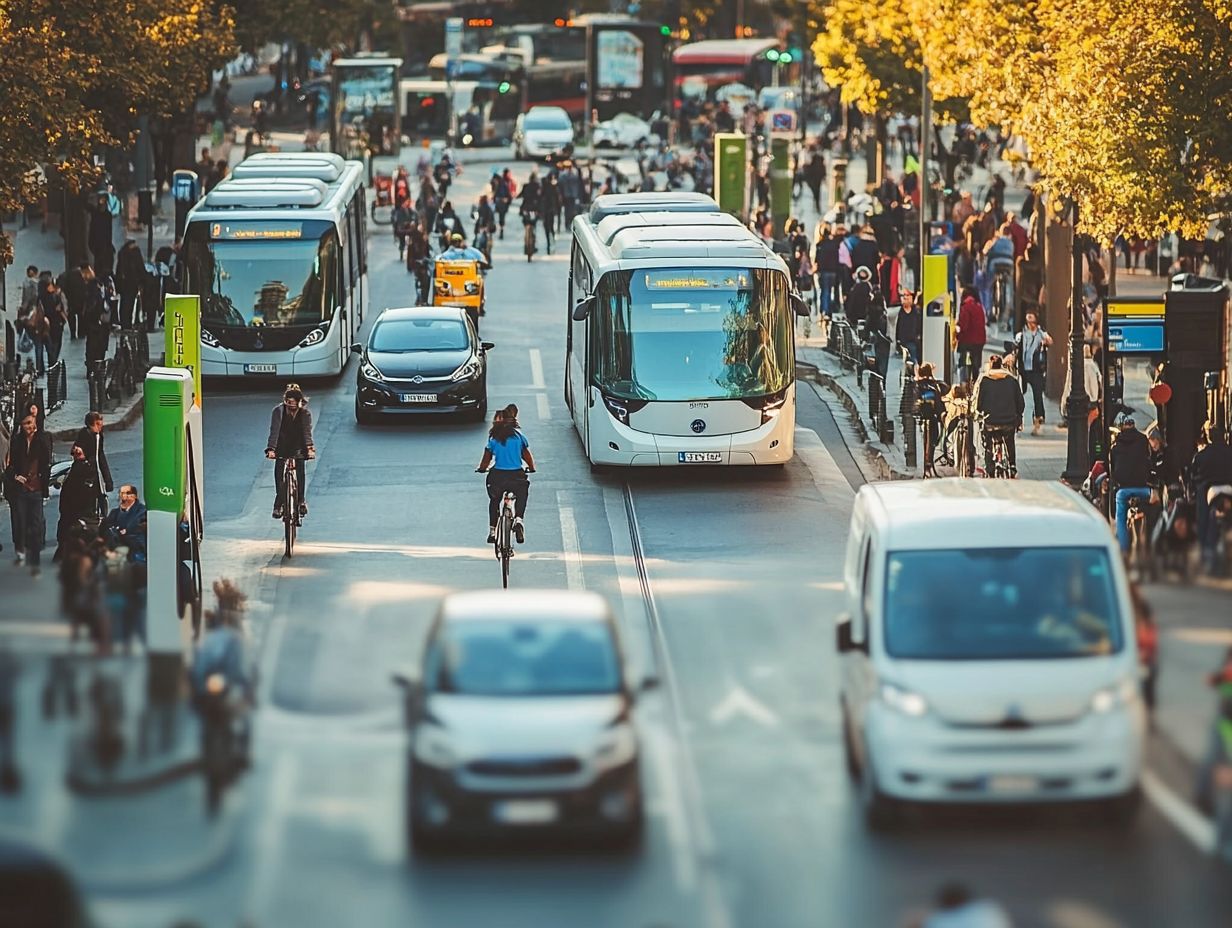
An EV boom refers to the rapid increase in the adoption and use of electric vehicles (EVs) in a particular area. As more people switch to EVs, it is important for cities to prepare to accommodate this change in transportation to ensure a smooth transition and reap the benefits of a cleaner and more sustainable future.
What infrastructure changes should my city make to prepare for the EV boom?
Your city should install more EV charging stations to meet rising demand. This includes public stations as well as options for workplaces and homes. Invest in renewable energy to power these vehicles.
What steps can I take as an individual to contribute to preparing for the EV boom in my city?
Start by learning about the benefits of EVs. Consider buying one and advocate for your city to invest in EV infrastructure and electric public transportation.
How can my city encourage more residents to switch to EVs?
Your city can offer incentives like tax breaks for residents buying or leasing EVs. Promote awareness through campaigns and community events.
What other benefits can my city expect from preparing for the EV boom?
Besides reducing emissions, preparing for the EV boom creates jobs and attracts tourism from EV drivers passing through your city.
How can my city ensure equity in the EV boom preparations?
It s crucial that the benefits of the EV boom are accessible to all. Ensure equal access to charging stations and implement inclusive policies for EV incentives.

